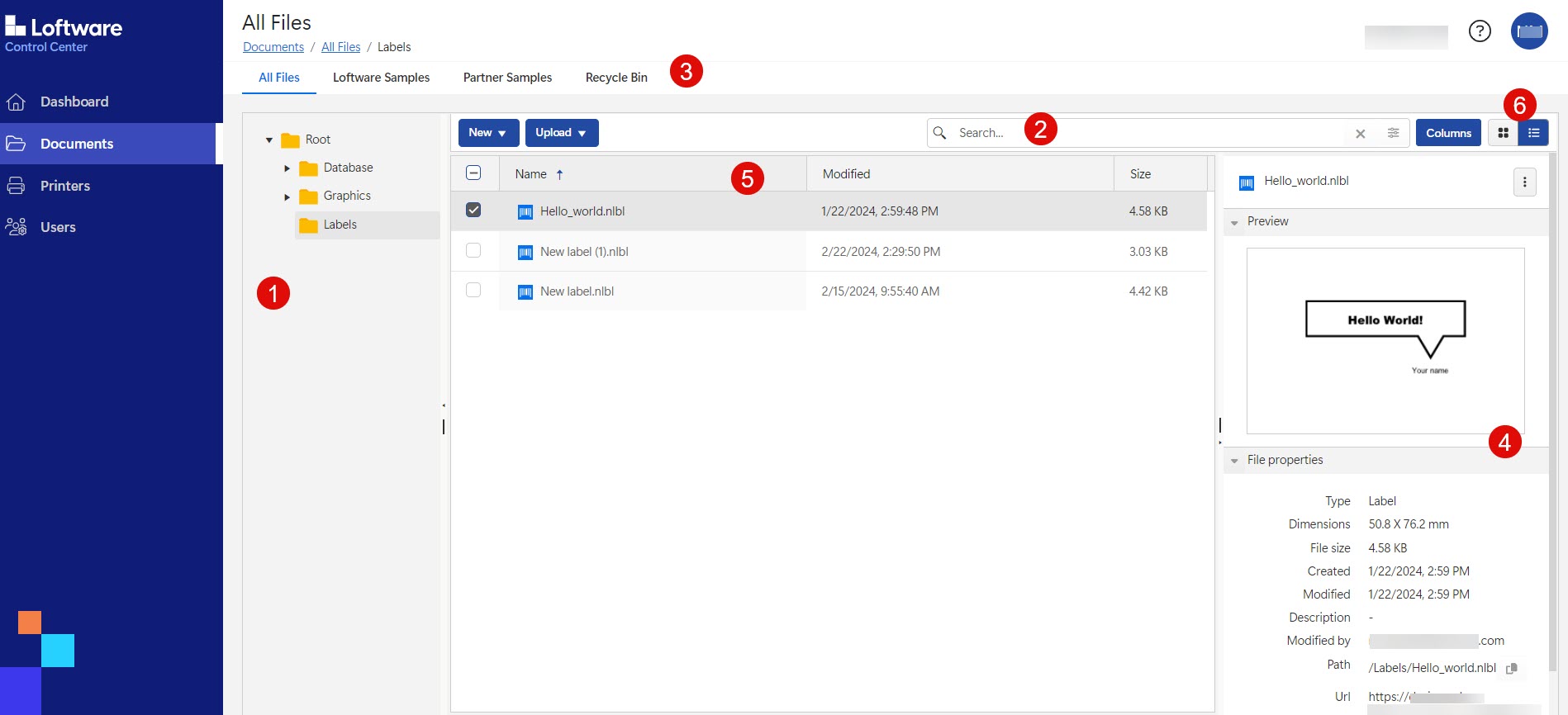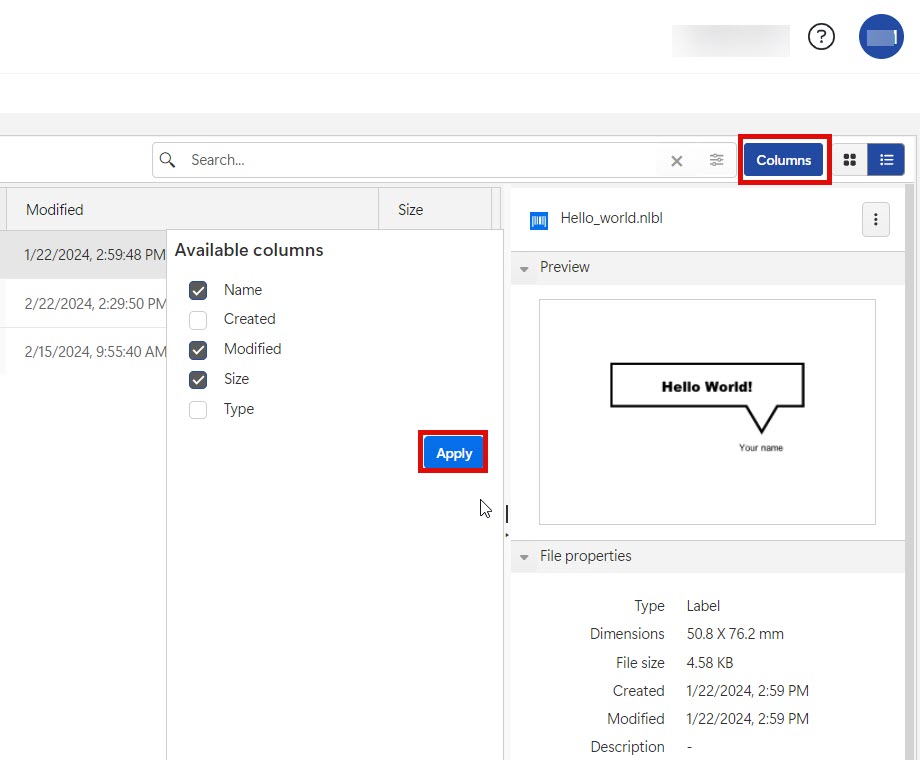Documents
Web storage benefits:
Store all your labeling files in one place. This way you keep your files accessible to everyone.
Centralized storage of your labeling files prevents users from printing older or obsolete labels.
Share your labeling files with all Control Center users.
Print your labels Cloud Print Form.
See previews and properties of the label and graphic files.
Use Searching for files and label data for your files and folders.
You can open and edit label templates (.nlbl files) in your Desktop Designer directly from
Note
When you upload your project files (labels, database, and graphics), use a predefined corresponding folder structure:
You can store almost all types of files in
Here is the list of supported file types:
Loftware files (nlbl, lbl, nsln, sln, misx, mis, dvv)
Text database files (txt, dat, csv, sch)
Excel database files (xls, xlsm, xlsx)
Access database files (accdb, mdb)
Graphic files (bmp, jpg, jpeg, jpe, jfif, gif, tif, tiff, png, wmf, emf, ico, pcx, psd, pdf, svg)
Fonts (ttf, odf)
XML
Documents User Interface

Folder list (tree view)
Search options
Main tabs
Document properties and preview pane
Columns
Grid view and card view
In
Upload and download files.
The default
